Prune Nourry’s sculptures are to be touched, but not seen
At Galerie Templon, Paris, French artist Prune Nourry is exhibiting sculptural busts of visually impaired models. She has never seen the works, nor will anyone who visits the exhibition

At Galerie Templon in Paris, a new exhibition by French artist Prune Nourry is breaking the golden rule of art exhibitions, by encouraging visitors to touch the artworks. But the convention-breaking doesn’t end there; Nourry has never seen her works, nor will anyone who visits the exhibition, which will take place in total darkness.
For ‘The Phoenix Project’, Nourry invited eight visually impaired models to sit for her. She sculpted busts of each while blindfolded, simply through touching and listening. ‘I tried to find people of different ages, with different stories and perspectives. The sculptures were not only done by touching the faces, but by listening a lot.’ Some of the models Nourry invited to take part in the project had been blind since birth, others lost their sight through accidents or illnesses, but all, as the exhibition text explains, ‘have succeeded in overcoming their disability through their profession or voluntary work’.
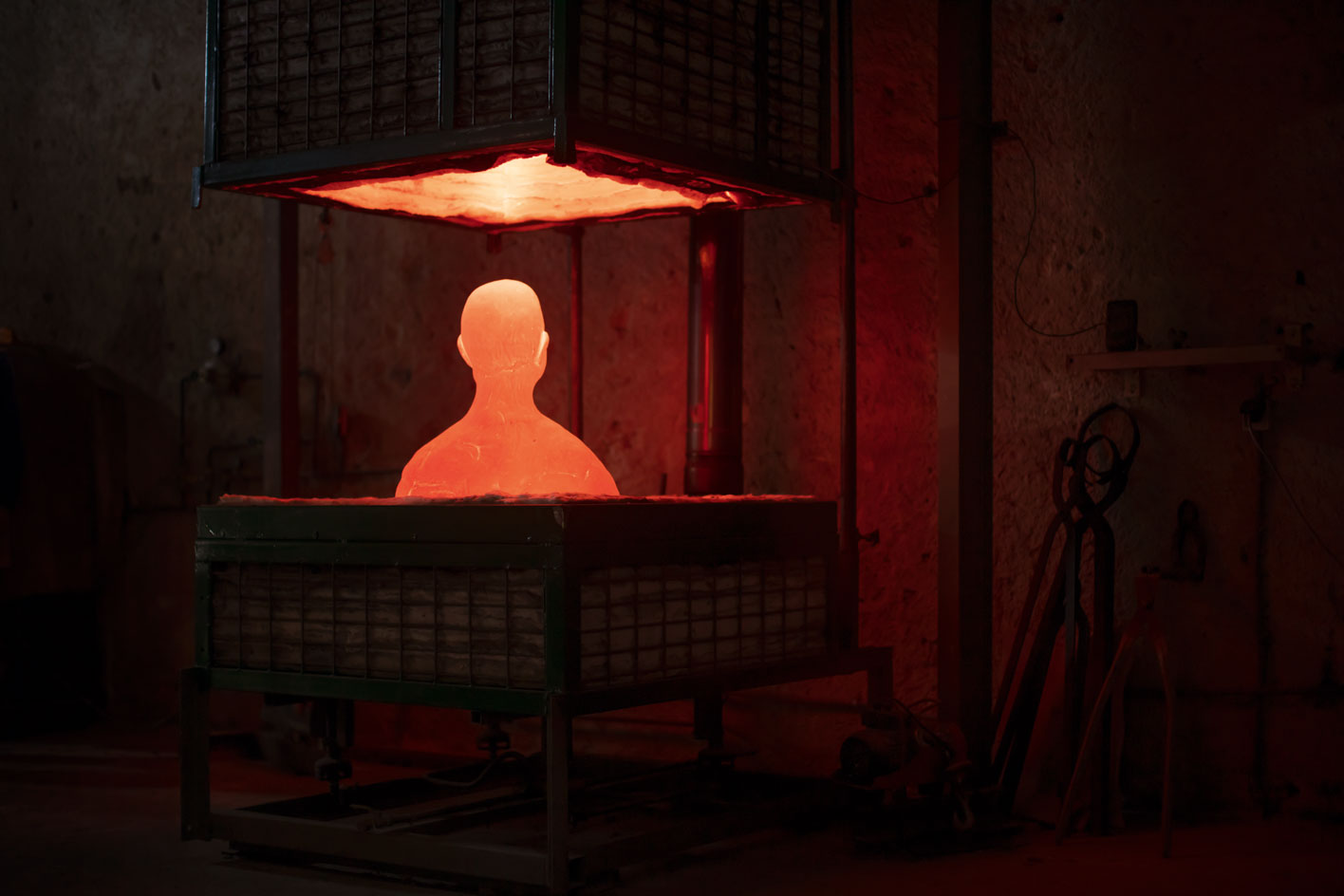
Prune Nourry. Glowing terracotta bust emerging from the oven before being dipped into ash using the Raku technique, digital , ADAGP, 2021
‘I try to see the world through their eyes, their words; it also makes me change my perspective. I am not looking for hyperrealism, on the contrary. Also, at the end of the sessions, I suggested they come and touch the bust with me and give their opinion, and sometimes it's like a rediscovery of their face that they thought they knew,’ she says. ‘Some models, in this very particular period, had not been touched for more than a year, so for them it was extremely moving to have someone who came to discover each of their features and who took a considerable amount of time to feel each detail of their skin.’
Nourry began by modelling the portraits in clay before moulding and casting them using Raku, a traditional Japanese ceramic technique. Once removed from the kiln, each fired clay sculpture was engulfed in ash, which then reemerged ‘like a phoenix’.
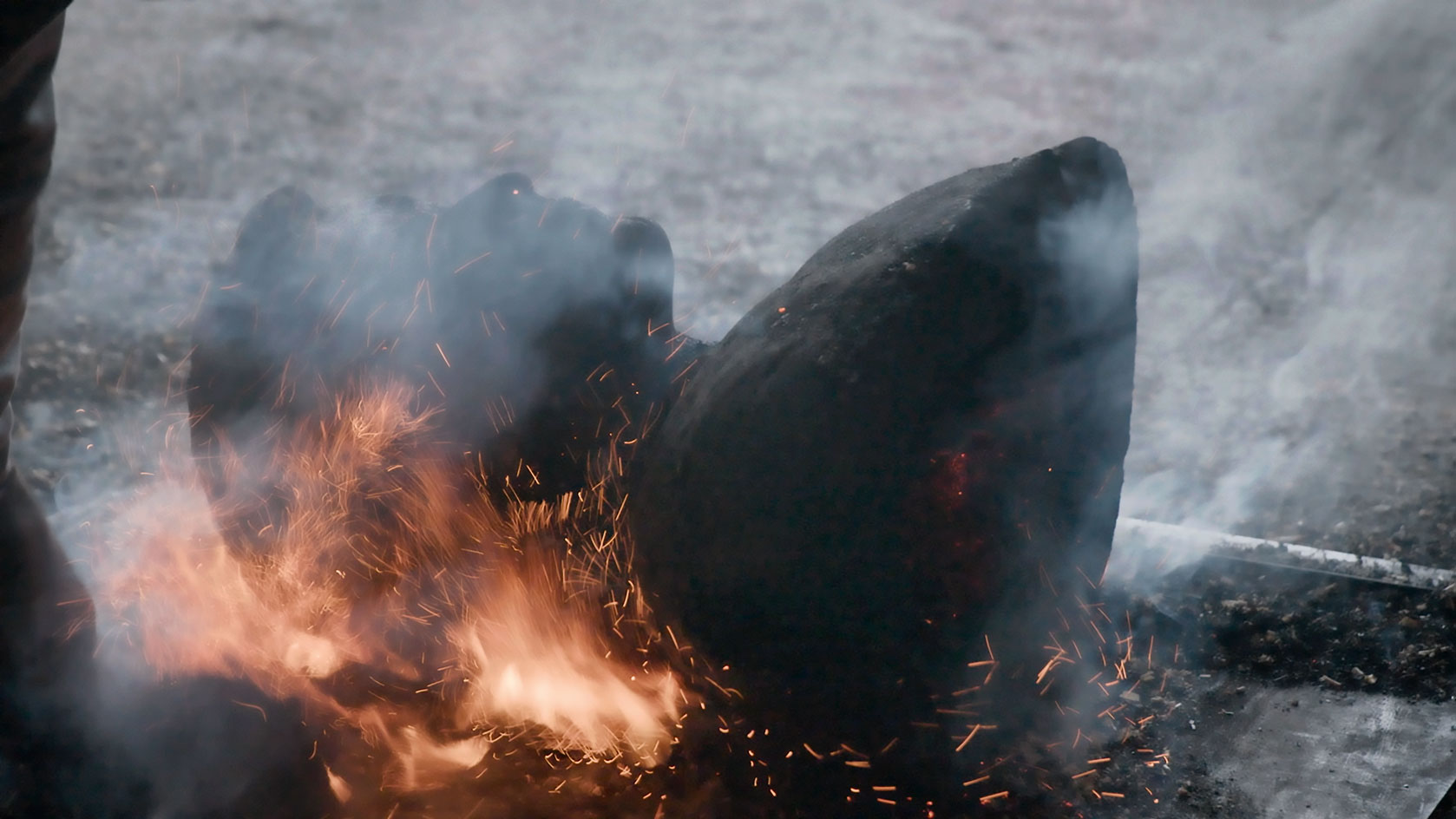
This is not the first time the artist has encouraged visitors to ‘touch the artworks’. In 2014, she urged physical engagement with her Terracotta Daughters, 108 lifesize sculptures in fired clay. ‘Sculpture for me is such a sensual material and to me the touch is important,' she says. But the idea went further than the experience of touch, it was about making the experience of art more accessible. ‘If not sculpture, then what?’ she says. ‘It’s an art that is made for touch and made for people who don’t have sight. After that, all of my shows tried to give as much access as possible to people who can’t see.’
Nourry’s work has long confronted ethical issues relating to the human body, healing, imbalances due to gender selection, scientific excesses, and the interdependence between living species. In 2019, after being diagnosed with breast cancer, Nourry created a film called Serendipity. She documented her treatment, its effect on her body and analysed her work in the ten years before her diagnosis. She unearthed startling coincidences. ‘One of my first sculptures was a breast’ she says.

Excerpt from the short-film by Vincent Lorca and Prune Nourry, 2021, ADAGP
In 2009, she staged Procreative Dinners, performances in which Nourry teamed up with a chef and a scientist to create a meal based on the different stages of assisted procreation. ‘At the end, people ate îles flottantes in which the top was a nipple of almond paste modelled on mine. I didn’t know at some point I would lose a nipple because of reconstruction [surgery], but would still have the mould from that project.’ In parallel to the exhibition, Nourry has published a new book, Aux Amazones, a poignant testimony of her illness with a preface by Angelina Jolie.
The concept of serendipity also played a role in ‘The Phoenix Project’. ‘I called the first model to ask him to pose for me; he accepted and I hung up the phone. Just then, my child put his mini fingers with his mini nails inside my eye and I was blind for four days. Being [temporarily] blind while starting a project about blindness put everything in perspective. That was a lot of learning for me.’
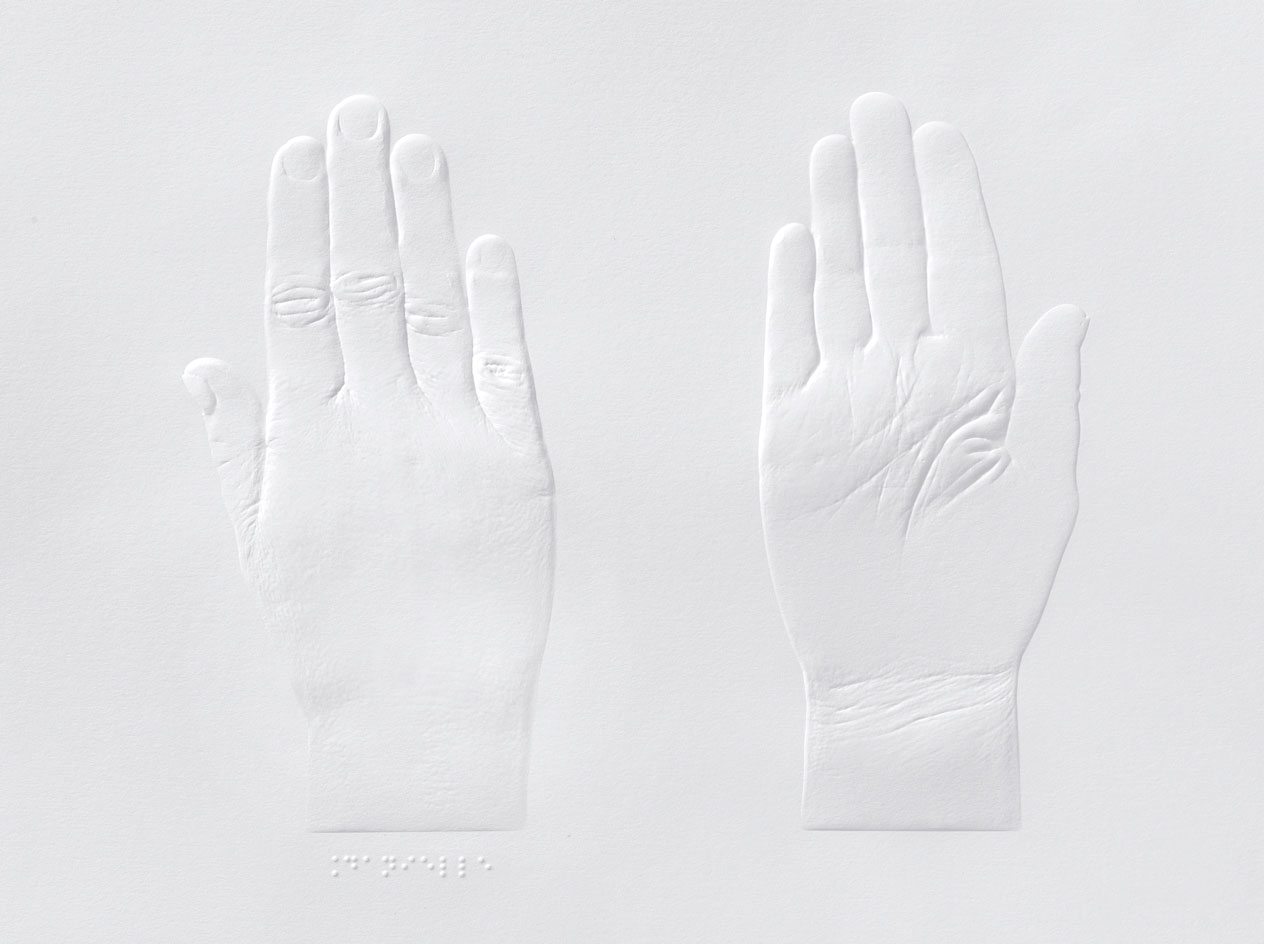
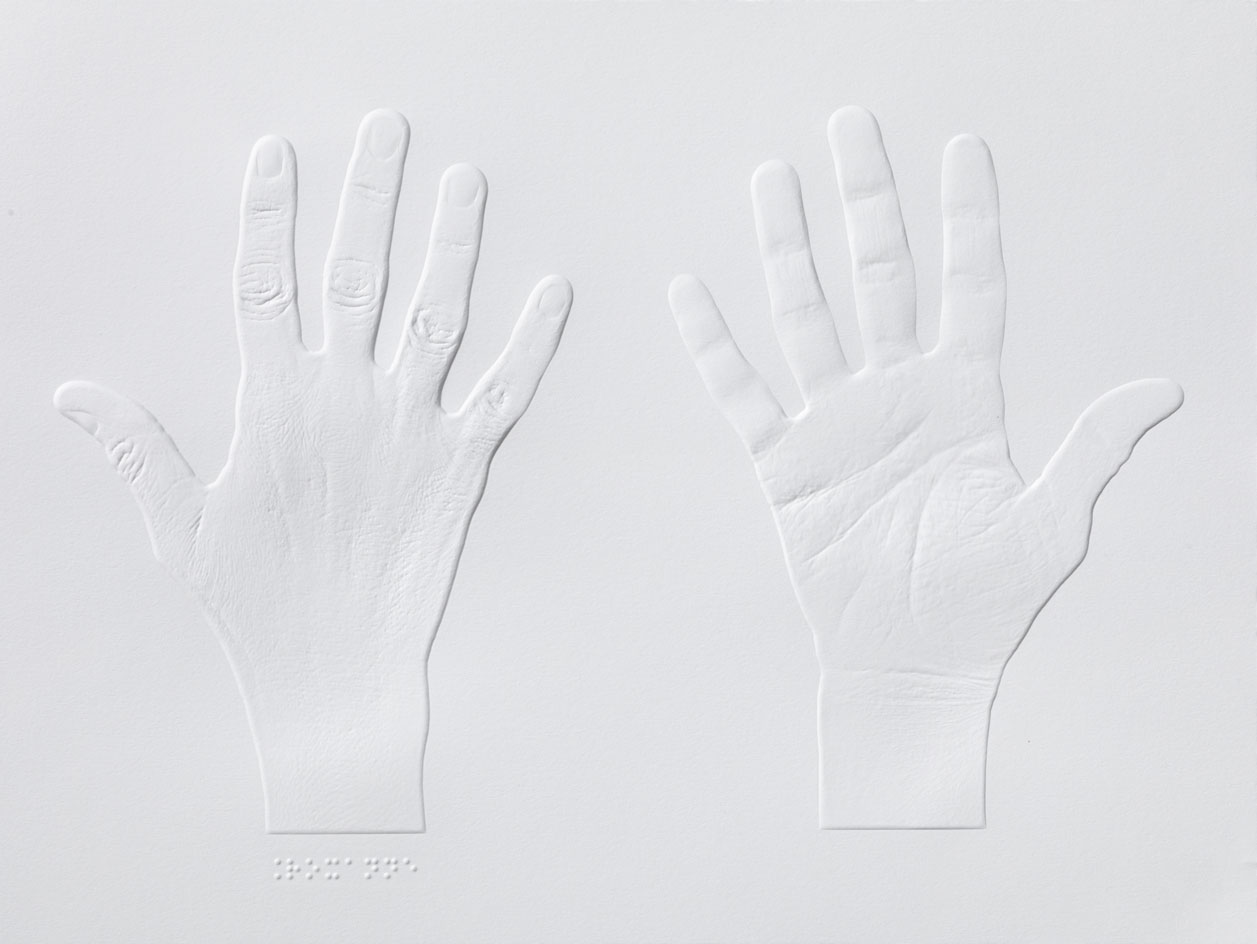
Prune Nourry, Lignes de vie (top: Danielle; above: Roxane) #4, 2021. © Photo Laurent Edeline
‘The Phoenix Project’ takes place in complete darkness, and has been created against standard guidance systems for the blind and visually impaired. As well as consulting with the National Institute for Blind Youth (INJA), Nourry took inspiration from the Centre des Monuments Nationaux, which offers blind and visually impaired people the opportunity to discover France’s historical monuments using innovative tactile and auditory aids.
Through tactile guide paths and a rope stretched between the busts, visitors can explore each of Nourry’s sculptures with their hands. Recordings of conversations between the artist and her models play above each work, transporting visitors to the intimacy of the studio sittings.
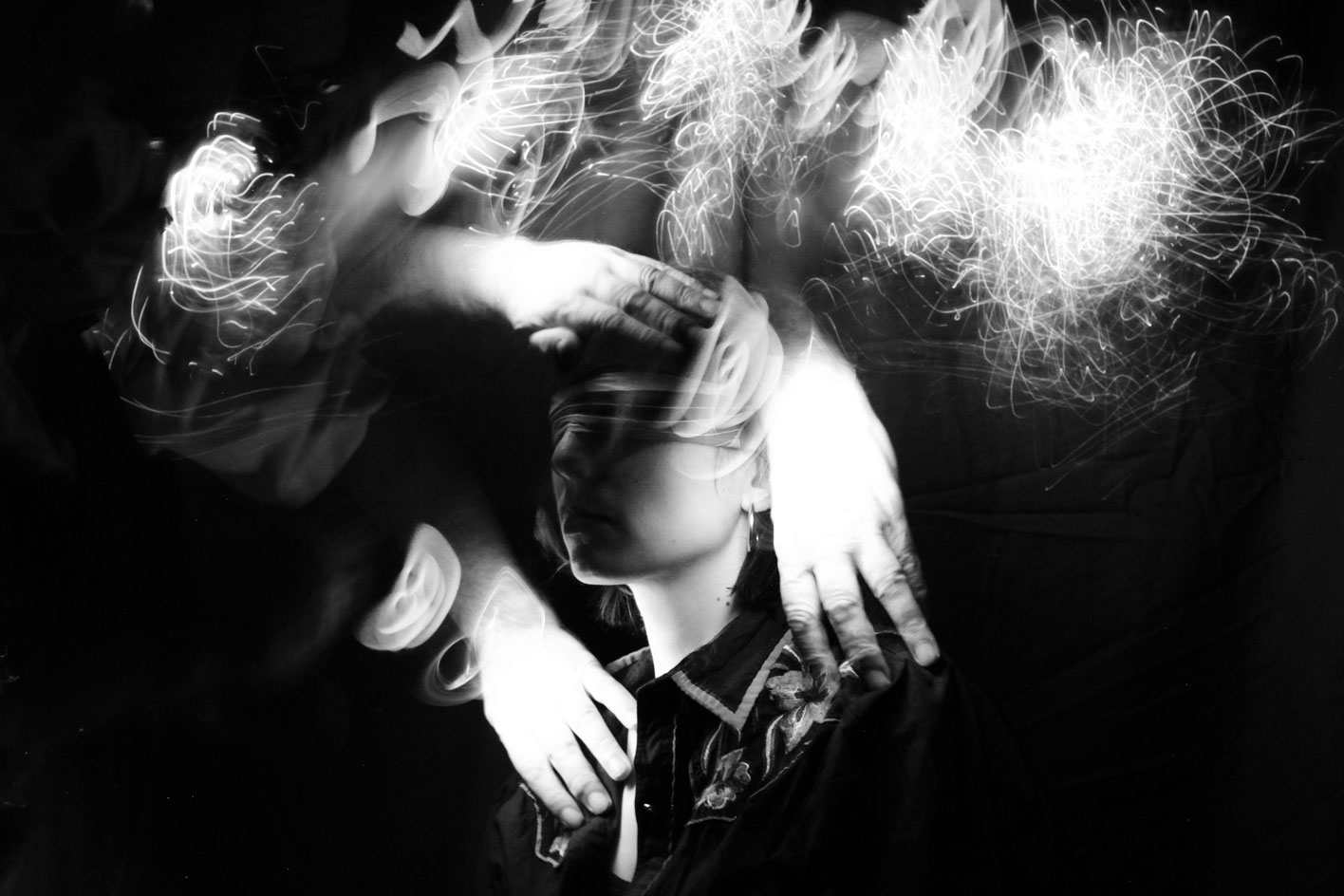
© Portrait of Prune Nourry 2021
An experimental short film by Vincent Lorca and Prune Nourry – accessible through audio description – focuses on the relationship between the Nourry, her models and the materials. Also for the show, a portrait of Nourry was shot by acclaimed Slovene photographer Evgen Bavcar, who has been completely blind since an accident aged 11.
On the walls, another series depicts a different sort of portraiture: paper works of the models’ hands, embossed with the help of a workshop of artisans specialising in Braille. ‘For visually impaired people, their hands become their eyes, but are also forms of portraits with the lifeline,’ says Nourry. The impressions their palms add a new layer of symbolism, one that emphasises the only sense through which we can experience Nourry’s work. Like the artist’s bust sculptures, these are made to be touched, not seen.
INFORMATION
Receive our daily digest of inspiration, escapism and design stories from around the world direct to your inbox.
‘The Phoenix Project’, until 23 October 2021, Galerie Templon, Paris, templon.com
ADDRESS
30 Rue Beaubourg
75003 Paris
Harriet Lloyd-Smith was the Arts Editor of Wallpaper*, responsible for the art pages across digital and print, including profiles, exhibition reviews, and contemporary art collaborations. She started at Wallpaper* in 2017 and has written for leading contemporary art publications, auction houses and arts charities, and lectured on review writing and art journalism. When she’s not writing about art, she’s making her own.
-
 Usher opens up about breakfast playlists, banana pudding and why a glass tumbler is always on his rider
Usher opens up about breakfast playlists, banana pudding and why a glass tumbler is always on his riderOn the heels of a collaboration with Baccarat, the Grammy-winning singer-songwriter breaks down his entertaining tips. 'Hosting is an expression of how you feel about your guests and also who you are.'
-
 The beauty trends that will define 2026, from ultra-niche fragrances to anti-ageing dental care
The beauty trends that will define 2026, from ultra-niche fragrances to anti-ageing dental careAs we enter the new year, we speak to experts in fragrance, skincare, aesthetics, wellness and more about the trends that will be shaping the way we look
-
 The most stylish hotel debuts of 2025
The most stylish hotel debuts of 2025A Wallpaper* edit of this year’s defining hotel openings. Design-led stays to shape your next escape
-
 Inez & Vinoodh unveil romantic new photography series in Paris
Inez & Vinoodh unveil romantic new photography series in ParisA series of portraits of couple Charles Matadin and Natalie Brumley, created using an iPhone in Marfa, Texas, goes on show in Paris
-
 Inside Davé, Polaroids from a little-known Paris hotspot where the A-list played
Inside Davé, Polaroids from a little-known Paris hotspot where the A-list playedChinese restaurant Davé drew in A-list celebrities for three decades. What happened behind closed doors? A new book of Polaroids looks back
-
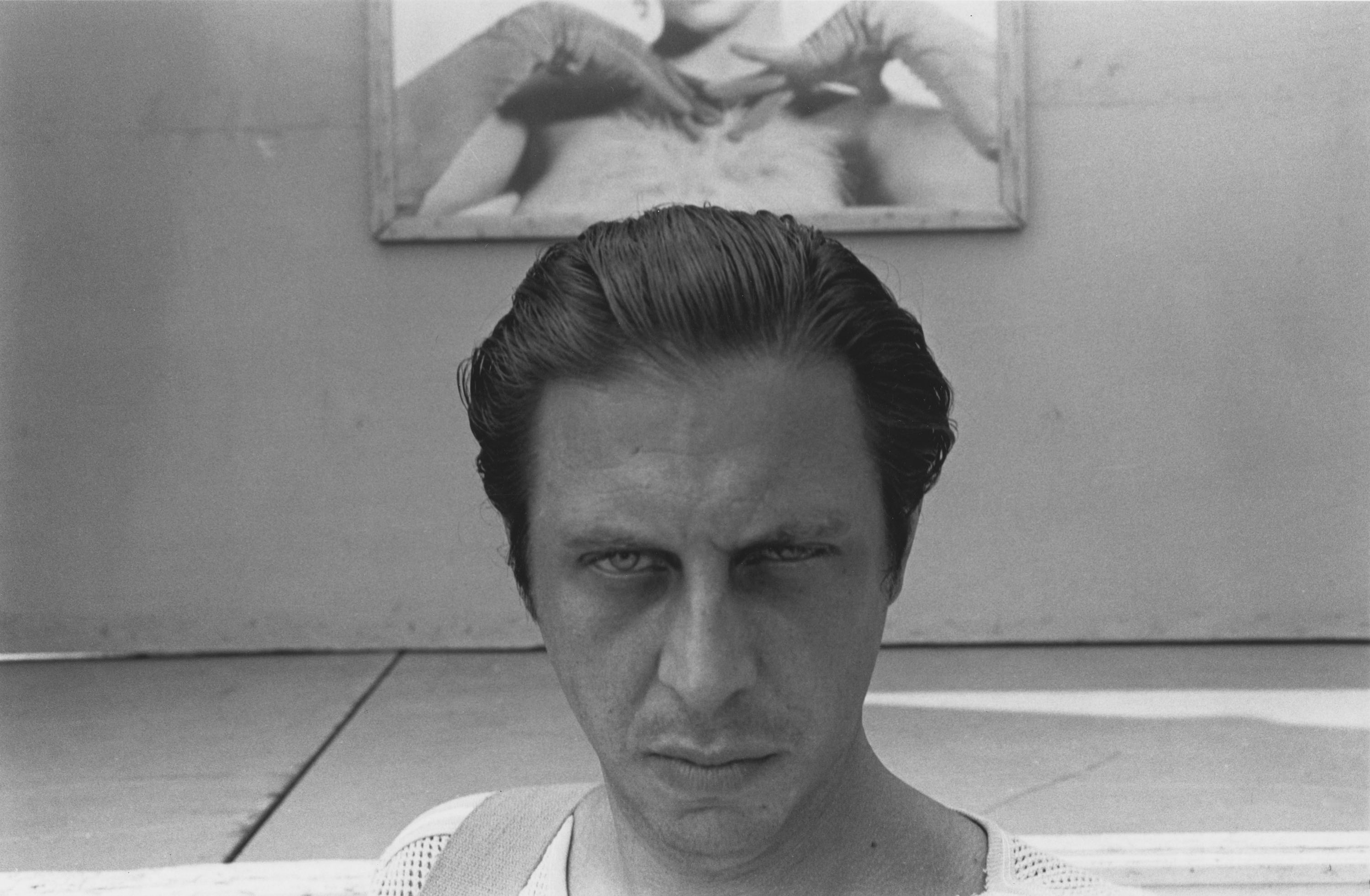 All eyes on Paris Photo 2025 – focus on our highlights
All eyes on Paris Photo 2025 – focus on our highlightsThe world's most important international photography fair brings together iconic and emerging names, galleries large and small – and there’s much to covet
-
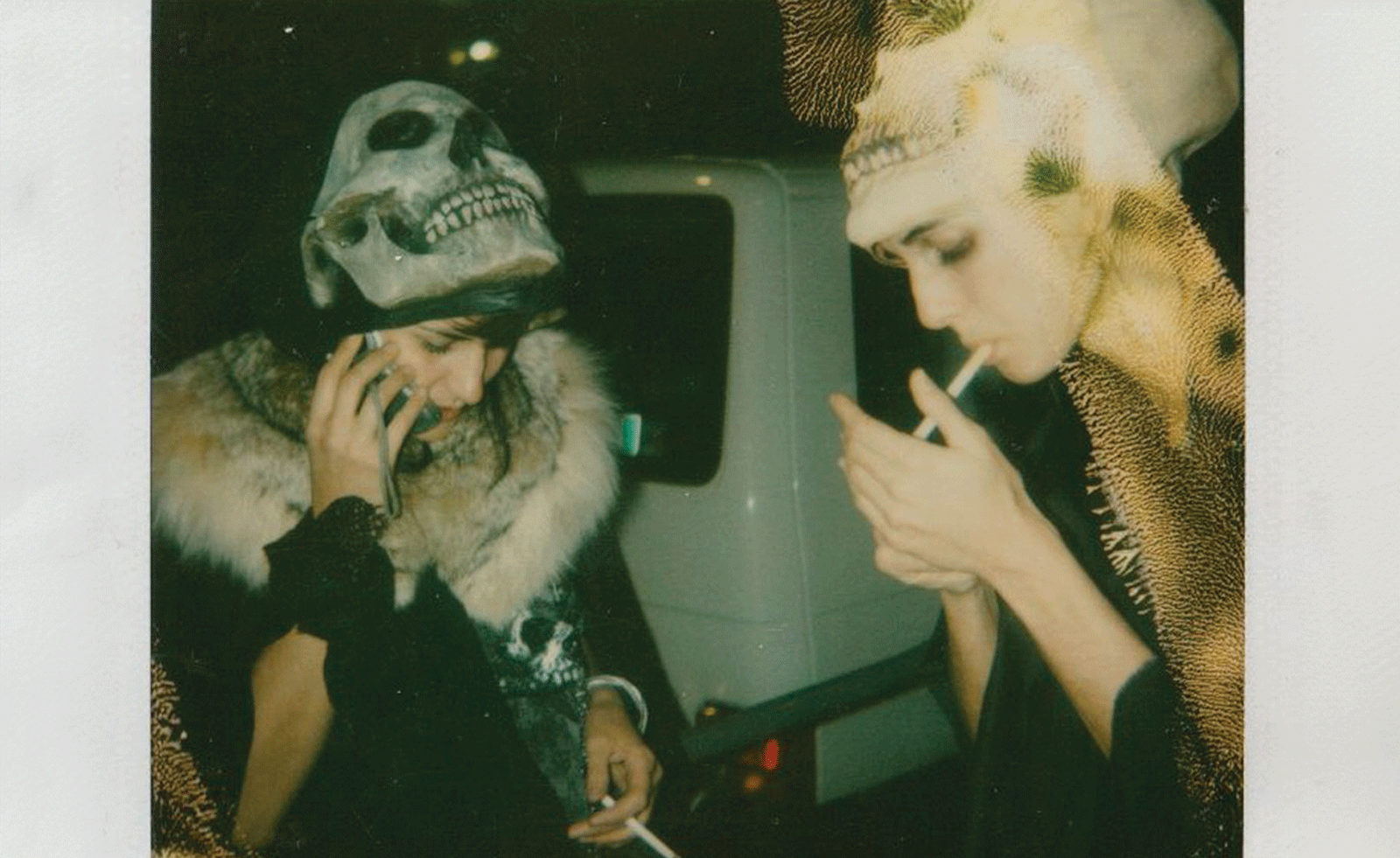 Ten things to see and do at Art Basel Paris 2025
Ten things to see and do at Art Basel Paris 2025Art Basel Paris takes over the city from 24-26 October. Here are the highlights, from Elmgreen & Dragset to Barbara Kruger and Dash Snow
-
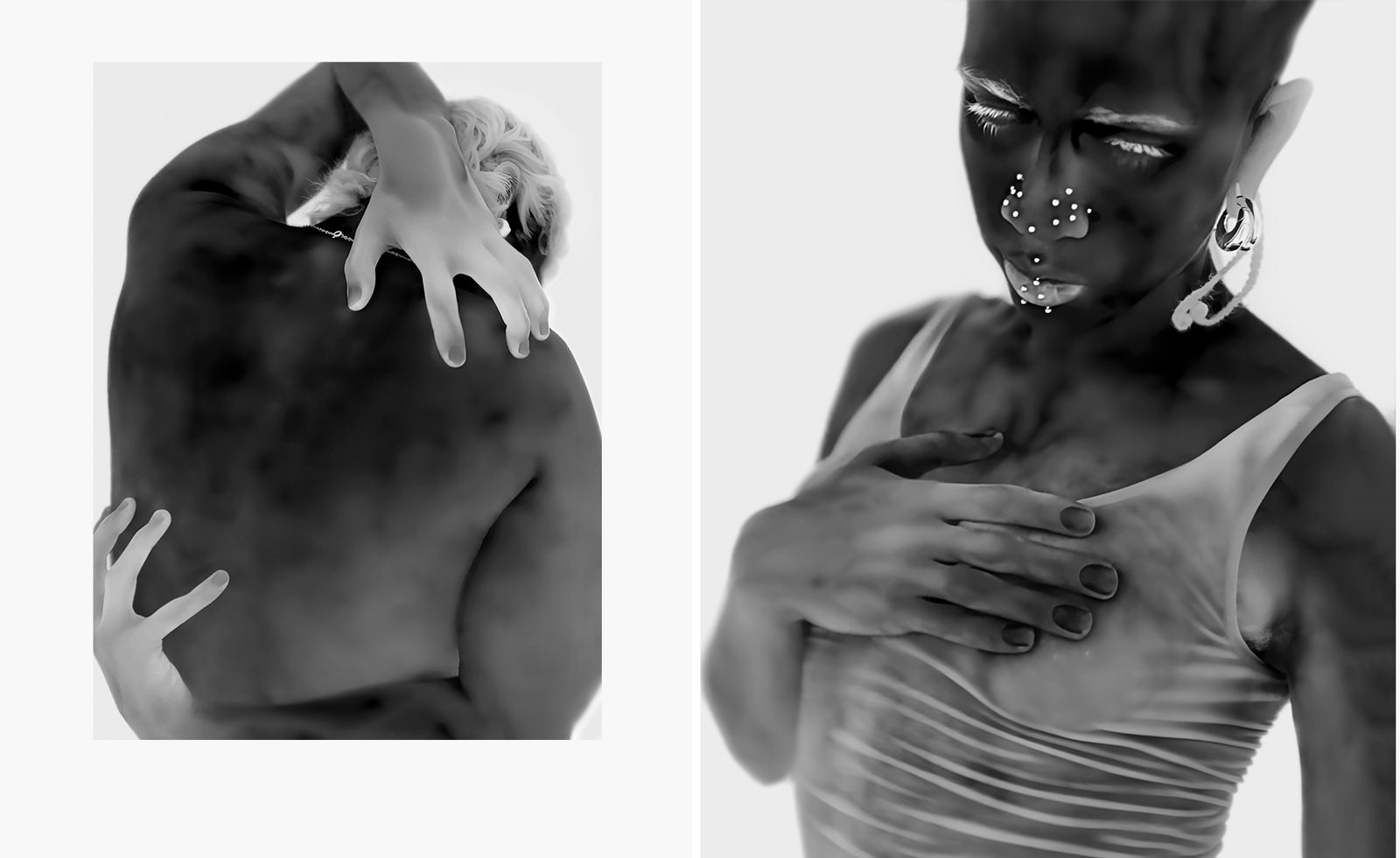 Yulia Mahr digs beneath the skin in her modern update of classic Greek statues in Paris
Yulia Mahr digs beneath the skin in her modern update of classic Greek statues in ParisIn 'The Church of Our Becoming', on view at the Courtyard at Dover Street Market Paris, Yulia Mahr celebrates real human bodies
-
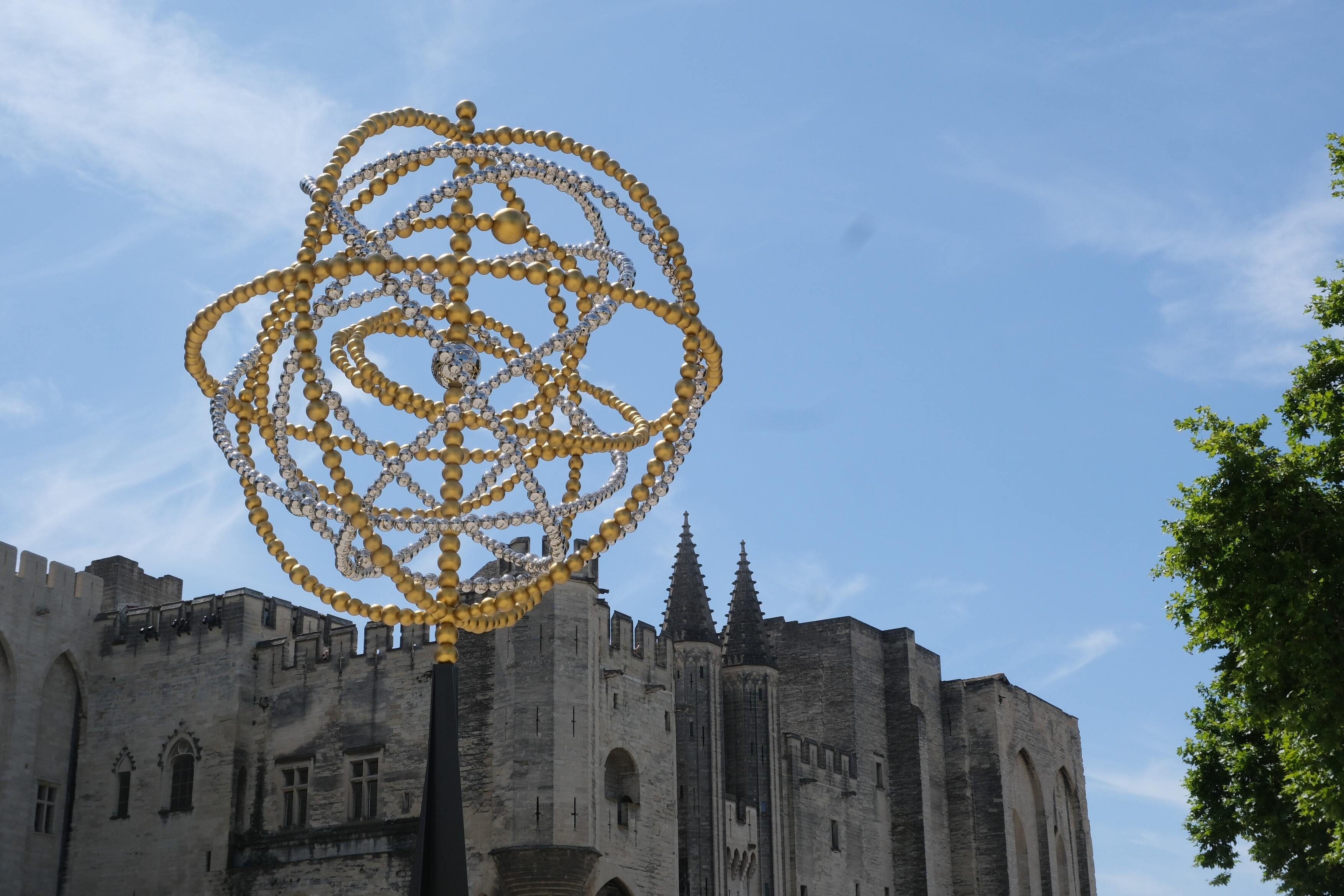 Jean-Michel Othoniel takes over Avignon for his biggest ever exhibition
Jean-Michel Othoniel takes over Avignon for his biggest ever exhibitionOriginally approached by Avignon to mark their 25th anniversary as the European Capital of Culture, Jean-Michel Othoniel more than rose to the challenge, installing 270 artworks around the city
-
 Rolf Sachs’ largest exhibition to date, ‘Be-rühren’, is a playful study of touch
Rolf Sachs’ largest exhibition to date, ‘Be-rühren’, is a playful study of touchA collection of over 150 of Rolf Sachs’ works speaks to his preoccupation with transforming everyday objects to create art that is sensory – both emotionally and physically
-
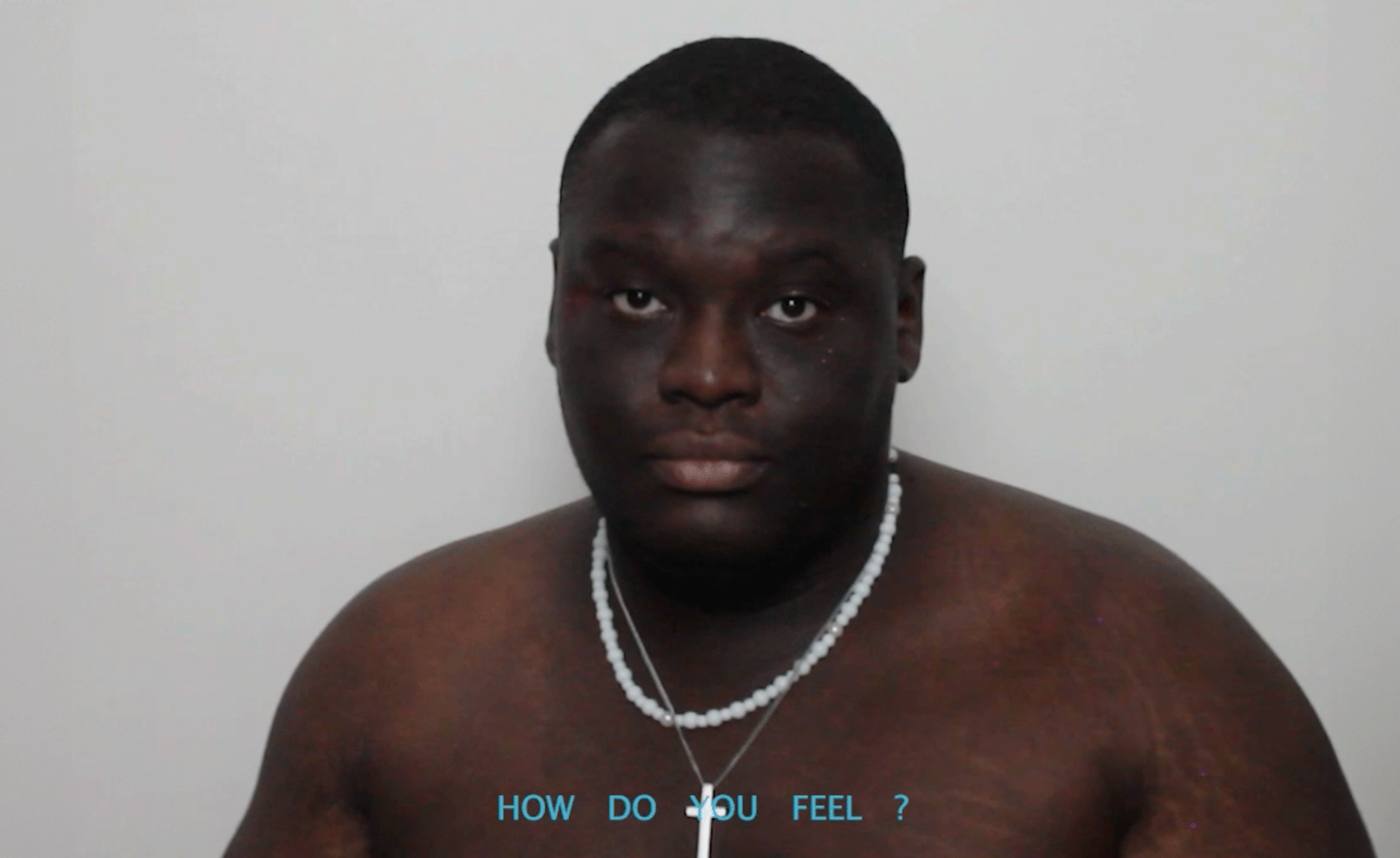 Joel Quayson’s winning work for Dior Beauty at Arles considers the theme ‘Face-to-Face’ – watch it here
Joel Quayson’s winning work for Dior Beauty at Arles considers the theme ‘Face-to-Face’ – watch it hereQuayson, who has won the 2025 Dior Photography and Visual Arts Award for Young Talents at Arles, imbues his winning work with a raw intimacy